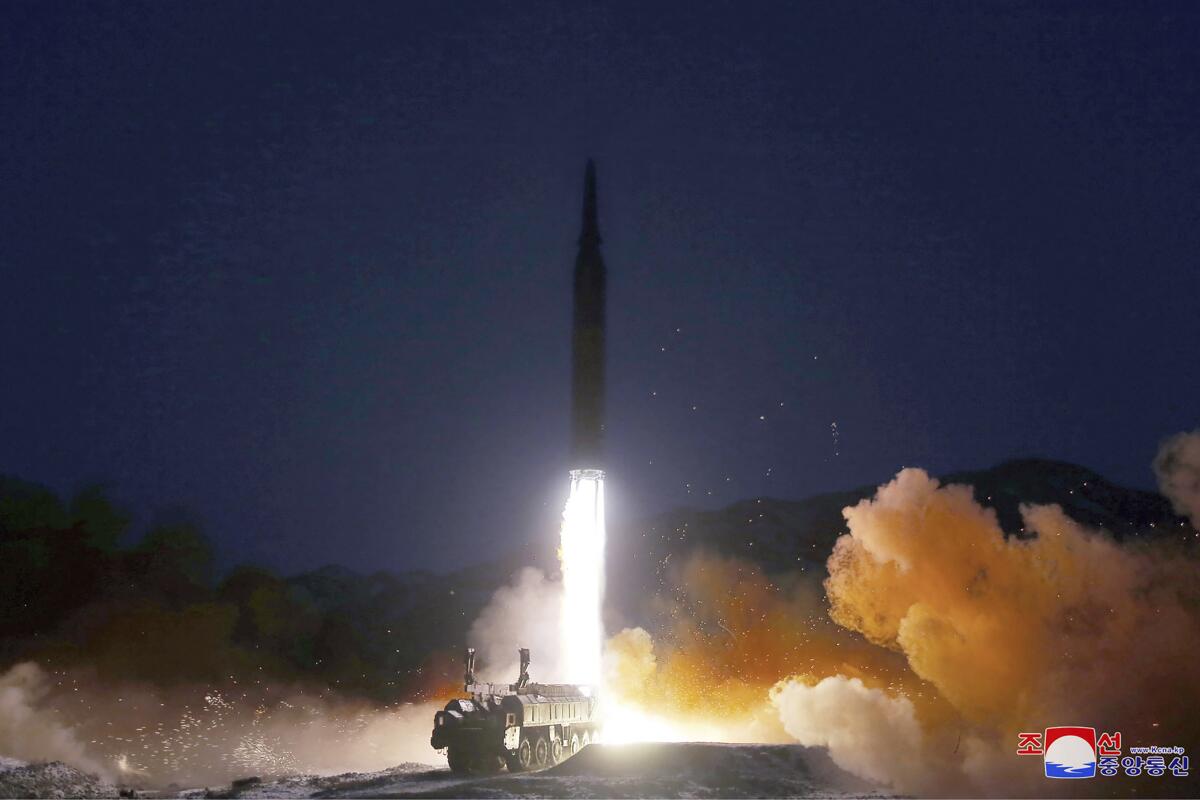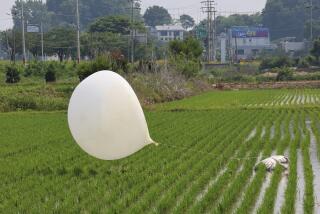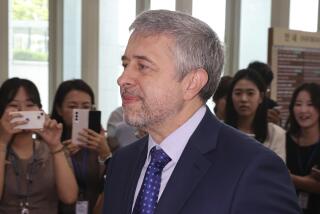North Korea fires missiles in response to U.S. sanctions

SEOUL — North Korea on Friday fired what appeared to be two short-range ballistic missiles in its third weapons launch this month, officials in South Korea said, in an apparent response to fresh sanctions imposed by the Biden administration for its continuing test launches.
South Korea’s Joint Chiefs of Staff said the missiles were fired 11 minutes apart from an inland area in western North Pyongan province, where North Korea is known to operate key missile bases and has frequently conducted test launches in recent years.
The missiles flew 267 miles cross-country on a maximum altitude of 22 miles before landing in the sea, the military said.
Japan’s coast guard urged vessels to pay attention to falling objects, but Chief Cabinet Secretary Hirokazu Matsuno said there were no reports of damage to vessels or aircraft.
Hours earlier, North Korea issued a statement berating the Biden administration for imposing fresh sanctions over its previous missile tests and warned of stronger and more explicit action if Washington maintains its “confrontational stance.”
The sanctions targeted five North Koreans over their roles in obtaining equipment and technology for the North’s missile programs in its response to the North’s missile test this week. Washington also said it would seek new U.N. sanctions.
The test-launch of a hypersonic missile on Tuesday — the second in a week — was overseen by leader Kim Jong Un, who said it would greatly increase his country’s nuclear “war deterrent.”
North Korea has been ramping up tests of new, potentially nuclear-capable missiles designed to overwhelm missile defenses in the region. Some experts say Kim is going back to a tried-and-true technique of pressuring the world with missile launches and outrageous threats before offering negotiations meant to extract concessions.
Following an unusually provocative run of nuclear and long-range missile tests in 2017 that demonstrated North Korea’s pursuit of an arsenal that could target the U.S., Kim engaged in diplomacy with then-President Trump in 2018 in an attempt to leverage his nukes for economic benefits.
But the negotiations derailed after Kim’s second summit with Trump in 2019, when the U.S. rejected his demands for major sanctions relief in exchange for a partial surrender of the nation’s nuclear capabilities.
Kim has since pledged to further expand a nuclear arsenal he clearly sees as his strongest guarantee of survival, despite the country’s economy suffering major setbacks after it shut its borders during the COVID-19 pandemic as well as persistent U.S.-led sanctions.
His government has so far rejected the Biden administration’s open-ended offer to resume talks, saying Washington must abandon its “hostile policy” first — a term Pyongyang mainly uses to describe the sanctions and joint U.S.-South Korea military drills.
South Korea’s presidential office said National Security Director Suh Hoon and other senior officials convened an emergency National Security Council meeting, expressed “strong regret” over the continued launches and urged Pyongyang to recommit to dialogue.
Leif-Eric Easley, a professor at Ewha University in Seoul, said North Korea appears to be signaling it will not be ignored and will respond to pressure with pressure.
“North Korea is trying to lay a trap for the Biden administration,” Easley said. “It has queued up missiles that it wants to test anyway and is responding to U.S. pressure with additional provocations in an effort to extort concessions.”
The timing of the launch and detection of multiple missiles suggest North Korea demonstrated weapons that were already operational, rather than some of its other missiles under development, as it sought to signal to Washington, said Kim Dong-yub, a professor at Seoul’s University of North Korean Studies.
Associated Press writer Mari Yamaguchi in Tokyo contributed to this report.
More to Read
Sign up for Essential California
The most important California stories and recommendations in your inbox every morning.
You may occasionally receive promotional content from the Los Angeles Times.










